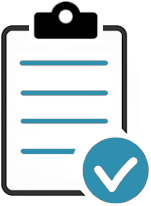ISO 14001:2015 requires organisations to consider risks and opportunities in relation to internal and external issues, environmental aspects and compliance obligations which themselves may be a source of risk or opportunity.
Section 6.1 requires an organization to maintain documented information of the process(es) needed in 6.1.1 to 6.1.4, to the extent necessary to have confidence they are carried out as planned.
Contents
Documentation for clause 6.1 identifies, outlines, and acknowledges the company's environmental risks and any opportunities that it may encounter.
These would include any abnormal risks and all and any emergency situations that may arise.
It also needs to show any opportunities the company may face to make any positive environmental changes or impacts.
The ISO 14001 standard does not prescribe a particular risk process or methodology to be documented; however, the onus is placed on the company to demonstrate a sound risk-based system is being followed.
The system the company follows should be easily explainable.
Undertake a SWOT analysis as part of your organisation’s business strategy to identify the external risks and opportunities, and plan actions to address them. Formal business risk assessment performed by your organization should take into consideration its context, associated risk and opportunities and mitigation plan.
Using the process approach, identify sources of input, activities, output, receiver of output, performance indicators to control and monitor processes, the risks and opportunities associated with them and action plan to address them.
Our Risks & Opportunities Procedure is proven to work.

The organization has to determine the environmental aspects, and the impacts of your activities, products and services that are under its control and influence.
Your organization should establish criteria to determine which of these aspects have or can have a significant environmental impact.
Environmental aspects should be categorised as:
An initial review of site information and baseline data from annual running costs and the quantities of energy use, water use, the waste produced and the raw materials used will help you to prepare a list of environmental aspects for your company.
Therefore, you need to think of environmental aspects at each stage of the ‘lifecycle’. It requires careful consideration of the lifecycle stages whose environmental aspects can be controlled or influenced.
Consider aspects associated with:
In laymen’s terms, environmental aspects cause; or have the potential to cause, an environmental impact.
A cause-and-effect relationship exists between environmental aspects and environmental impacts, respectively. For instance, an environmental aspect, or cause, can be the emission of volatile organic compounds. The environmental impact, or effect; is ozone depletion.
To comply with ISO 14001 Section 6.1.2, the following five actions should be undertaken:
The identification of environmental aspects will form the foundation of your environmental management system. The operational aspects that have significant impacts on the environment should become the basis for your organization to develop appropriate objectives and targets; therefore, you should be thorough when completing this step.
| Aspect | Impact | Activities | Objective | Target |
Energy usage |
Low volume usage |
Site-wide |
Ensure no increase |
No increase above 50 kW/PA |
Use of VOCs |
High volume usage |
Fabrication |
Reduce volume of VOC usage by using alternatives |
Reduction of VOCs use by 50% |
Contaminated scrap |
High volume |
Fabrication |
Segregate contaminants from other scrap |
Reduce by 20% |
Exhaust emissions |
Co2 emissions |
Delivery/Transport |
Drivers to turn off engine when static |
Reduce by 10% |
Objective evidence must contain established criteria for evaluating the significance of environmental aspects; perhaps using an Excel workbook, ideally with formulae for calculating significance.
Our Environmental Aspects & Impacts Procedure is proven to work.

Compliance obligations will arise from mandatory requirements, and these include for example, applicable laws that require permits and regulations that apply to the environmental aspects of your business’s activities, products and services, and their associated environmental impact.
While voluntary commitments might arise from organizational and industry standards, supply chain relationships, commitments established in contracts and product specifications, principles of good governance, community relations, and ethical standards. Both voluntary and mandatory compliance obligations can result in risks and opportunities to the way you do business.
Documented information could be a list or matrix of compliance obligations:
| Environmental Aspect | Compliance Obligation | Risks | Opportunities | |
| Mandatory | Voluntary | |||
Using f-gases in air conditioning units |
The Fluorinated Greenhouse Gases Regulations 2009 |
Annual sustainability and corporate responsibility reporting |
Compliance with emission limits |
Restrict hazardous substances in specifications |
Disposal of waste batteries |
Waste Batteries and Accumulators Regulations 2009 |
Adopt a community environmental recycling project |
Time and resources |
Positive publicity |
Generation of waste |
Control of Pollution Act (COPA) 1974 |
Agreement to meet a packaging reduction target |
Licence/permit compliance and reporting |
Increased revenue from waste recovery and recycling approaches |
In order to document your organization’s compliance obligations, you could use an Excel workbook comprising an indexed list of relevant legal requirements, and other obligations.
Other obligations might include standards and procedures in connection with operational tasks and associated hazards by referencing the minimum acceptable legal, industry standards and technical specifications against the associated equipment and operating routines at your facility.
Information in the compliance obligations register for each requirement includes but is not limited to:
The compliance obligations register must be reviewed and updated for adequacy, both for new regulations and updated regulations, on a quarterly basis and communicated to relevant staff whose responsibilities or actions can affect compliance.
Our Compliance Obligations Procedure is proven to work.

Clause 6.1.4 of ISO 14001:2015 requires an organisation to take actions to address its significant aspects, compliance obligations and risks and opportunities. The standard requires a planned approach with respect to the actions that arise from Clause 6.1.1, 6.1.2, and 6.1.3, with the environmental management actions being integrated into other processes that exist within the business.
The actions planned must include the establishment of environmental objectives, improving existing controls, e.g., procurement, finance or design departments, establishing or expanding monitoring regimes and methods; or incorporating the actions into a new EMS specific process, e.g., new operational controls (Clause 8.1) or new emergency preparedness routines (Clause 8.2).
The ISO 14001 standard states that an organization should:
the processes that are required to address the planning section needs fully.
When the Environmental Manager plans the EMS, they need to carefully consider the organization's context according to section 4.1 and the expectations and needs of all interested parties according to section 4.2, including the scope of the EMS.
Things that need to be considered in respect to the abovementioned elements are risk and opportunity. Furthermore, all environmental, legal, and regulatory issues need to be considered.
The goal is to ensure the EMS can reach its intended objectives and outcomes and avoid any external factors that can prevent it from becoming a reality. Lastly, the aim is that continual improvement must be achieved.
The organization is required to be able to forecast and determine any emergency situations that may occur and what their environmental impact may be. Critical to this are the related documented procedures regarding risk mitigation and control.
All of the ISO 14001 clauses are fully-documented and explained in our Environmental Management System Template (EMS).
We have procedures, templates, checklists, process maps, forms and gap analysis tools to help your documentation without missing a single input or output.
Before you invest all the hours reinventing the wheel, before you spend countless dollars outsourcing the task — try our templates.
Updated: 26th February 2022
Author: Richard Keen

Richard is our Compliance Director, responsible for content & product development.
But most importantly he is ISO's biggest fanboy and a true evangelist of the standards.
Learn more about Richard

Don’t Try to Manage It All Alone!
Our ISO Auditors and Quality Manager Trainers have been in this industry for years, and since 2002 we’ve been providing thousands of small businesses and large corporations with the tools they need to get certified.
Instead of trying to create everything you need to follow this process from scratch, use ours. We have procedures, templates, checklists, process maps, forms and gap analysis tools to help you control your documented information without missing a single input or output.
Before you invest all the hours reinventing the wheel, before you spend countless dollars outsourcing the task — try our templates.
| QMS ISO 9001 |
EMS ISO 14001 |
OH&S ISO 45001 |
|
Risks & Opportunities Procedure - view sample The purpose of this procedure is to outline your organization’s the risk and opportunity management framework and the activities within. The risk and opportunity management framework defines our current risk management process, which includes; methodology, risk appetite, methods for training and reporting. Forms & Reports also included:
|
$19 USD |
$19 USD |
$29 USD
|
Environmental Aspects & Impacts Procedure The purpose of this procedure is to outline your organization’s methodology for identifying environmental aspects relating to our operations and product life cycle, and for the subsequent determination of the significance of related impacts that may have actual or potential significant impacts on the environment. Forms & Reports also included:
|
$19 USD |
||
Compliance Obligations Procedure The purpose of this procedure is to outline your organization’s methodology for identifying, complying and monitoring environmental obligations which relate to our identified aspects in the context of our operations and product life cycle. Forms & Reports also included:
>> Free Download - Control of Calibrated Equipment Procedure - this will give you a good idea of what to expect when you purchase the procedure. |
|
$19 USD |
|
Pay by Credit Card, Debit Card, PayPal or Apple Pay.


|
Please read our Money Back Guarantee. |
Bought by Small Businesses and Large Corporations our templates have been sold online and CD since 2002.
Used by:
The Templates are used by first-timers following our step-by-step, clause-by-clause guidance documents; and experienced Quality Managers wishing to streamline and improve their existing documentation.
The application of our templates is scalable and generic; regardless of the size and type of organization. The elements that form the quality management system are the same.
1. Our customizable templates save you time and money by offering a streamlined process to create your quality documentation
2. They’ve got everything you need in one simple template
3. Proven to work our templates have helped thousands of businesses big and small achieve certification
4. Documents use styles to make reformatting and rebranding a breeze
5. Our templates are generalizable for any industry or sector. The application of our templates is scalable and generic; regardless of the size and type of organization.